The BCI Classifier on the NPXLab Suite – Decoder Edition, represents a major upgrade of the previously released P300 Classifier tool. This last version adds the ability to analyze EEG signals (and not just ERP) through the use of classical classifiers (as the ones used in the P300 based BCIs) on EEG data or on spatially filtered signals by means of Common Spatial Pattern facilities built in the tool itself. The startup form (see Fig. 1) has been modified to allow the selection of the protocol family (actually ERP or CSP based classifiers). Two buttons (“ERP Classifiers“ and “CSP Classifiers”) have been added to allow the selection of the desired protocol.
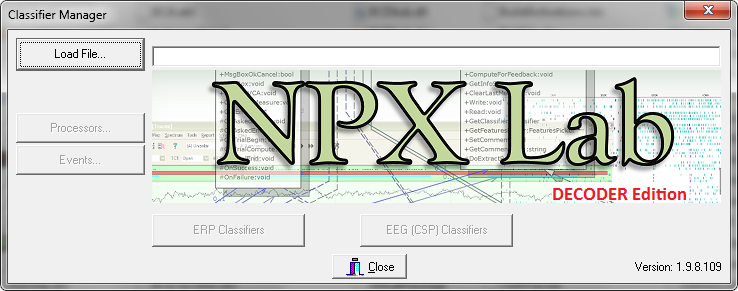
Figure 1: The BCIClassifier – DECODER Edition startup form.
By clicking the “ERP Classifier” button the form previously described in the P300 Classifier will appear, whereas the following new form will appear in the case of the CSP selection:
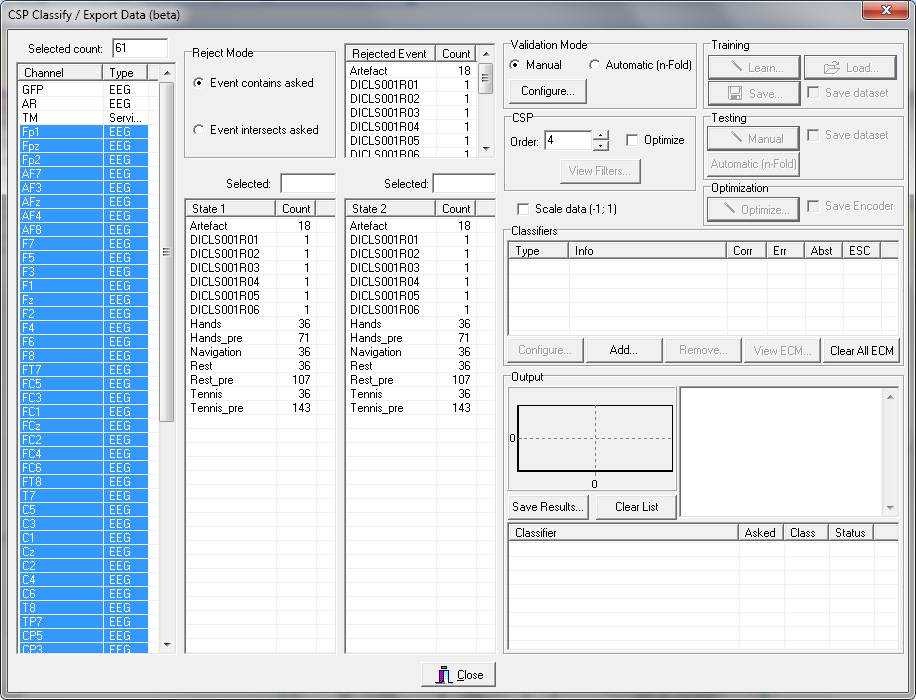
Figure 2: The main CSP Classifier form.
From this form the user has just to select the sensors to use (left list), the two events to use for the CSP computation (State 1 and State 2 lists) and the classifiers, following the same procedures described for the P300 Classifier. The main differences are that the Encoder, if not provided, can be automatically generated and that it is possible to select and review the filters to be used by the classifiers: after a training was performed, and then the filters have been computed, it is possible to see how they are mapped on the scalp by pressing the “View Filters” button: a form similar to the one of Fig. 3 will be shown.
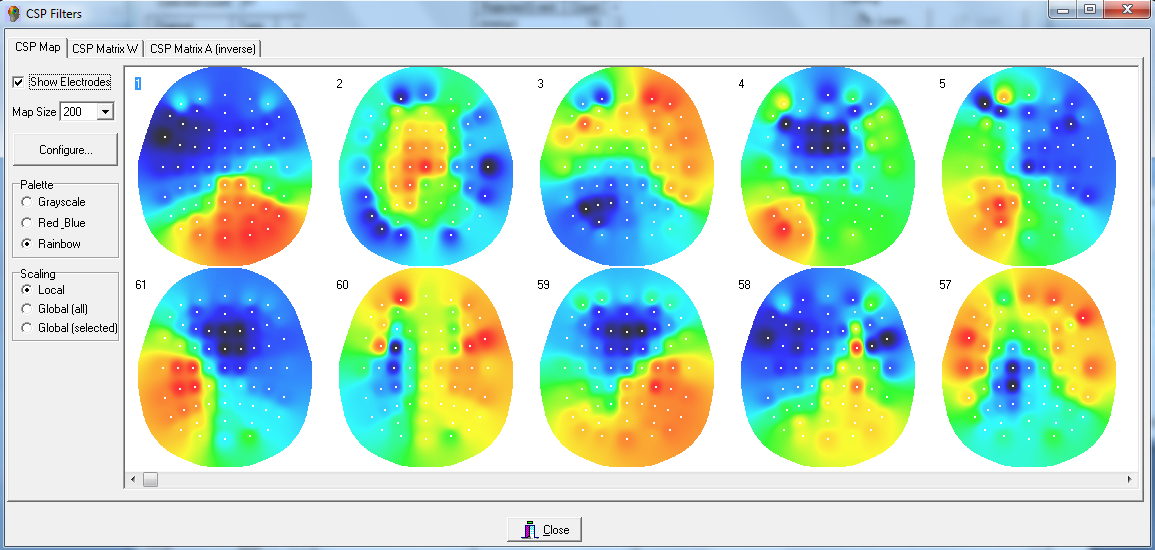
Finally, as in the case of the P3Classifier, is it possible to use and configure many different classifiers (actually StepWise Linear Discriminant Analysis, Support Vector Machines, Artificial Neural Networks, Fisher Linear Discriminant Analysis), to evaluate their performances, to test and validate them according to many different conditions (manual and automatic), to compute many different metrics, etc... in a very fast and efficient way. Project partners can already benefit from it because it is very easy to use and because it supports many different file formats, such as EDF, GDF, Brain Vision Analyzer, BCI2000, Neuroscan, ASCII, Micromed, EBNeuro, etc.., as described in the Supported File Formats section
As an example, we provide here the procedure used to apply five different classifiers (SVM with linear kernel, SWLDA, BLDA, ANN and SRLDA) to classify EEG patterns in a tennis/navigation imagery mental task protocol.
The operator has to select the two events in the corresponding lists, the training and testing datasets (with the same modalities described for the P300Classifier), the classifiers to use (by pressing the “Add...” button) and press the training and testing button to classify the data. The main results are reported in Fig. 4 and are computed using 24 trials for the training and the successive 48 for the testing datasets.
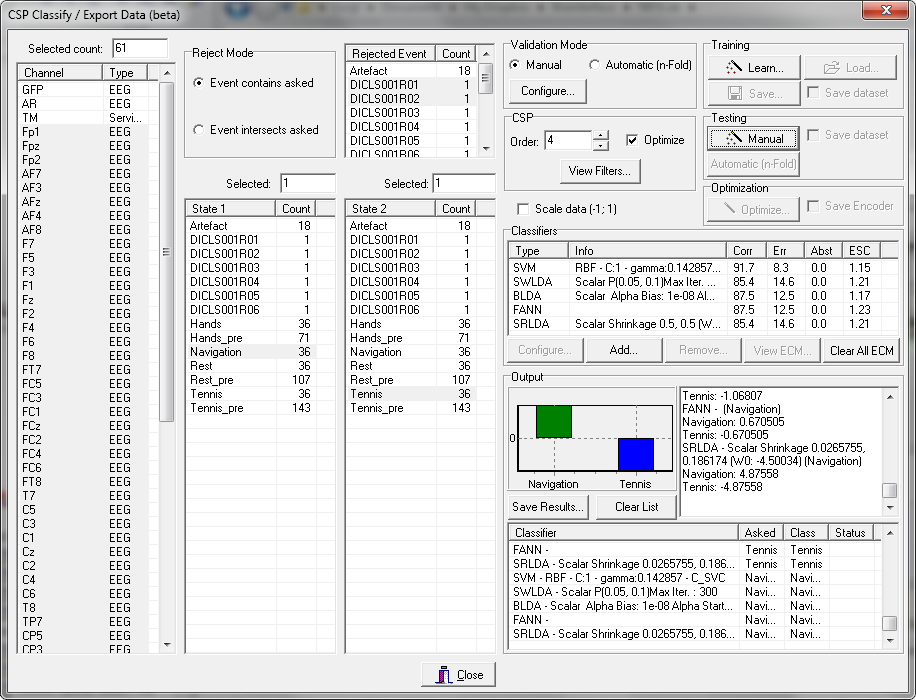
In this case an accuracy of 91.7%, 85.4%, 87.5%, 87.5% and 85.4% was achieved with the SVM, SWLDA , BLDA, ANN and SRLDA classifiers respectively. By selecting the SVM classifiers in the “Classifiers” box and clicking on the “View ECM...” button it is finally possible to have access to a detailed view of the performances of the classifier and many different metrics (Extended Confusion Matrix form, see Fig. 5).
From the ECM form one can deduce that 44 out of the 48 trials were correctly classified, that the 4 errors were all made while trying to classify the Navigation task (no errors on tennis), that the mean accuracy was 91.7%, that the Estimated Selection Cost (ESC) was 1.25, that the Information Transfer Rate (ITR) was 0.58618 and so on. For extended results obtained for the classification of data from 27 healthy subjects please refer to the Appendix.
The ECM can then be copied and saved in format that is compatible with the BF++ Toys (freely accessible at www.brainterface.com) and which also provides tools to optimize BCI system designed for a huge range of applications.
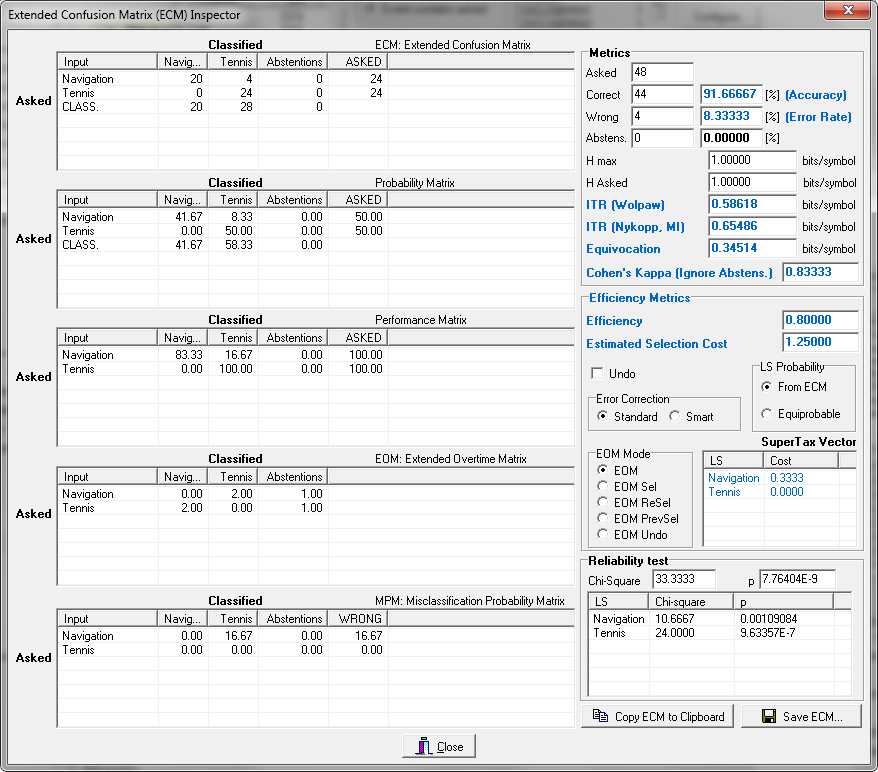
Created with the Personal Edition of HelpNDoc: Easily create Help documents